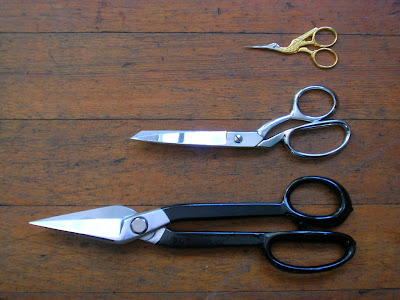But the cork. I have yet to find anything better for capping the end of the seam ripper. Hard plastic caps crack, soft plastic covers are eventually sliced through. I've tried taping covers on, which gums things up, and a small knot of fabric was soon shredded. However, the cork does not come off until I want it to, it protects other items in my sewing kit from the seam ripper, it's easy to put on and take off, and, if I accidentally drop it between the washing machine and the dryer, it's easily replaceable. A cork also makes the seam ripper immediately identifiable. Gone are the days of, "Is that the seam ripper? Nope, it's the screwdriver." If anyone knows of a better stopper for the end of a seam ripper please let me know.
So let's raise a glass to the cork. Oh, and the seam ripper too.




































